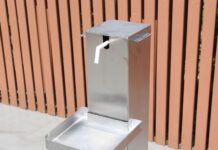Giant inflatables have become iconic fixtures in parades, festivals, and marketing events. Their colossal size and vibrant designs make them attention-grabbing spectacles, but have you ever wondered what goes into creating these oversized marvels? From initial sketches to the final float, the journey of a giant inflatable involves a blend of creativity, engineering, and craftsmanship. This article takes you behind the scenes to explore the design and manufacturing processes that bring these larger-than-life creations to life.
The Concept and Design Phase
The journey of a giant inflatable begins with a concept. Designers and clients collaborate to determine the inflatable’s purpose—whether for a parade, marketing campaign, or promotional event. The design phase is crucial as it translates abstract ideas into tangible visuals.
- Conceptualisation: This stage involves brainstorming sessions where designers and clients discuss the inflatable’s theme, size, and intended impact. Whether it’s a beloved character or a brand mascot, every detail is considered to ensure the inflatable aligns with the client’s vision.
- Sketching and CAD Modeling: Once the concept is finalised, designers create detailed sketches and computer-aided design (CAD) models. These models help visualise how the inflatable will look at its full scale and are crucial for planning the construction process. CAD software allows for precise measurements and adjustments before production begins.
Material Selection and Fabrication
Selecting suitable materials is pivotal to the durability and functionality of giant inflatables. The materials must withstand weather conditions and maintain structural integrity while being lightweight for easy handling.
- Fabric Choices: Most giant inflatables are made from durable, weather-resistant materials like nylon or PVC. These fabrics are chosen for their strength, flexibility, and ability to hold air pressure. They are often treated with coatings to enhance water resistance and UV protection.
- Fabrication Process: The fabrication involves cutting the fabric into the required shapes and sizes and then sewing or welding the pieces together. Special attention is given to the seams and joints, as these areas are prone to stress and must be reinforced to prevent leaks and tears.
Engineering and Structural Integrity
Engineering is critical in ensuring that giant inflatables are safe and functional. The structural design must account for wind resistance and weight distribution to prevent tipping or collapsing.
- Structural Framework: Some inflatables maintain their shape using internal frameworks made of lightweight materials like aluminium or plastic. This framework is critical for more giant inflatables that need extra support to withstand strong winds or heavy loads.
- Airflow and Inflation Systems: Efficient airflow is essential for adequately inflating the inflatable. It is achieved through powerful blowers that continuously pump air into the inflatable. Engineers design these systems to ensure consistent inflation and to prevent deflation during use.
Production and Assembly
Once the design and materials are set, production can begin. This phase involves assembling the various parts of the inflatable and conducting rigorous testing to ensure everything functions correctly.
- Assembly Line: The assembly process involves stitching or welding the pre-cut fabric pieces together. It is done on a large scale, often in a dedicated production facility where multiple inflatables are made simultaneously.
- Quality Control: Every inflatable undergoes thorough quality control checks. These include inspecting seams for leaks, testing the inflation system, and ensuring the final product meets safety and design standards. Any defects are corrected before the inflatable is shipped out.
Testing and Safety Measures
Testing is crucial in manufacturing to ensure the inflatable performs as expected and adheres to safety regulations.
- Field Testing: Before an inflatable is used in a public setting, it is tested under various conditions. It includes simulating different weather scenarios and checking how the inflatable handles stress. Field testing helps identify potential issues and ensures the inflatable’s reliability.
- Safety Protocols: Manufacturers follow strict safety protocols to prevent accidents and injuries. These protocols include reinforcing weak points, adding safety features like emergency release valves, and ensuring the inflatable’s stability during use. Compliance with safety standards is essential for gaining certifications and approvals.
Maintenance and Longevity
Maintaininggiant inflatables is critical to extending their lifespan and ensuring they remain in good condition for future use.
- Routine Maintenance: Regular cleaning and inspections are necessary to keep inflatables looking their best. It involves removing dirt, checking for any signs of wear or damage, and repairing any issues promptly.
- Storage and Care: Proper storage is crucial to prevent damage. Inflatables should be stored in a dry, cool place away from direct sunlight and extreme temperatures. Proper folding and packaging also help prevent creasing and damage during storage.
Final Thoughts
The design and manufacturing of giant inflatables is a complex and fascinating process that combines art, engineering, and craftsmanship. Every step, from initial concept to final production, is meticulously planned to ensure these colossal creations captivate and entertain audiences. Understanding the behind-the-scenes efforts that go into making these inflatables can deepen your appreciation for these spectacular displays. Whether parading down city streets or floating high above a festival, these inflatables are a testament to human creativity and ingenuity.





















